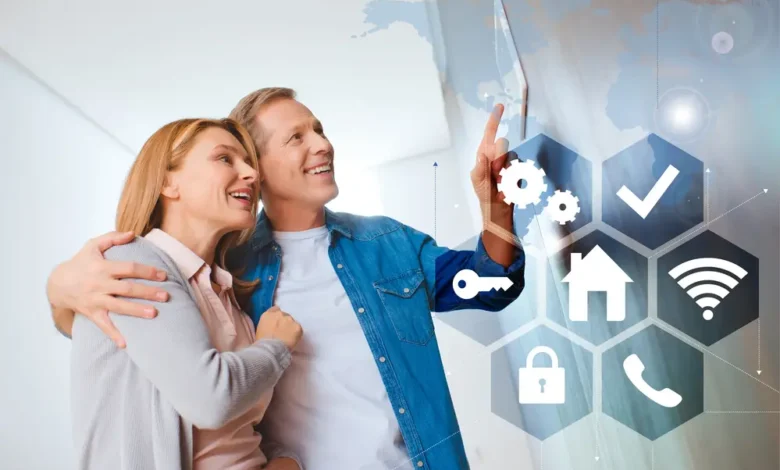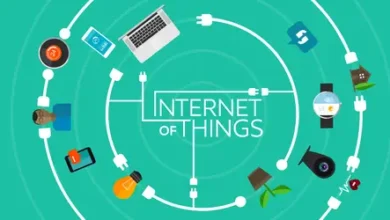Smart Home Integration: How to Create a Seamless Connected Environment

Creating a seamless connected environment in your home has never been more accessible or exciting. All thanks to the rapid advancements in smart home technology. Whether you’re a tech-savvy young adult or someone in your 50s looking to enhance your living space, Smart Home Integration can significantly improve your daily life. From voice-activated assistants to advanced IoT technologies, the possibilities are endless.
One of the most popular and user-friendly ways to start your smart home journey is by incorporating voice-activated assistants like Amazon Alexa, Apple Siri, and Google Assistant. These systems allow you to control various aspects of your home with simple voice commands. For instance, you can ask Alexa to play your favourite music, set reminders, or even control your smart lights and thermostat. Siri, integrated with Apple HomeKit, offers similar functionalities, allowing you to manage your home through your iPhone, iPad, or HomePod. Google Assistant, on the other hand, provides seamless integration with Google Home devices. This enables you to control everything from your smart TV to your security cameras.
What’s new in 2024?
In 2024, the smart home landscape is dominated by innovative technologies displayed at events like CES, the Consumer Technology Association. Held in January at the Las Vegas Convention Center in Winchester, Nevada, United States, the event typically hosts presentations of new products and technologies in the consumer electronics industry.
One standout device is the Linxura Smart Home Controller, a compact gadget that can manage up to 52 smart home devices through an intuitive scroll wheel. This controller is compatible with platforms like Alexa, Sonos, LIFX, and Philips, and future updates will include support for Matter and Google Home. Its E Ink screen and long battery life make it a practical addition to any smart home setup. Another exciting development is the Nanoleaf Permanent Outdoor Lights, which are weatherproof and designed to enhance your home’s exterior with multicolour lighting. These lights can be controlled via voice commands or a smartphone app. Thereby adding both style and functionality to your outdoor spaces.
If you are looking to improve your home’s energy efficiency, smart thermostats like the Google Nest Thermostat are a game-changer. These devices learn your schedule and preferences, adjusting the temperature automatically to save energy and reduce utility bills. Similarly, smart plugs and switches allow you to control appliances remotely, ensuring that you never leave a device on by accident.
Feel safe at home
Smart Locks
Security is another crucial aspect of smart home integration. Advanced security cameras and smart locks provide peace of mind by allowing you to monitor your home from anywhere in the world. Devices like the Ultraloq U-Bolt Pro Series offer keyless entry and can be controlled via a smartphone app, making it easier than ever to secure your home.
Smart Beds and Air Purifiers
Health-focused innovations are also making their way into smart homes. Air purifiers with smart capabilities can monitor air quality and adjust settings to ensure a healthy living environment. Plus, smart beds and sleep trackers help you optimize your sleep patterns, contributing to overall well-being.
Smart Home Assistant
The integration of these technologies is made possible by platforms like Home Assistant, which allows you to control all your smart devices from a single interface. Home Assistant supports a wide range of devices and can be integrated with voice assistants like Alexa and Siri. This means you can use voice commands to control your lights, thermostat, security system, and more, all from one place. It is of the outmost importance to pair your voice with voice assistants, not just to give them orders, but also as a matter of security. In doing so, devices will only be controlled by family members, preventing strangers to break in or attempt to.
Smart Home Controller
Setting up a smart home controller can be a straightforward process if you follow a few key steps. First, it’s important to choose a smart home controller that is compatible with your existing smart devices. Once you’ve selected your controller, the next step is to connect it to power and your home Wi-Fi network. Some controllers may require an Ethernet cable for a direct connection to your router, but most will connect wirelessly. After powering up your controller, download the corresponding app on your smartphone or tablet.
The app will guide you through the setup process, which typically involves signing in with your account, naming your device, and connecting it to your Wi-Fi network. With the controller set up, you can start adding your smart devices. Once your devices are connected, you can create routines and automations to make your home more efficient, such as turn off all lights and lock the doors when you say Goodnight to your smart assistant. Exploring additional features and integrations can make your smart home even more seamless. Embrace the future of home automation and enjoy the benefits of a smart, connected environment.





